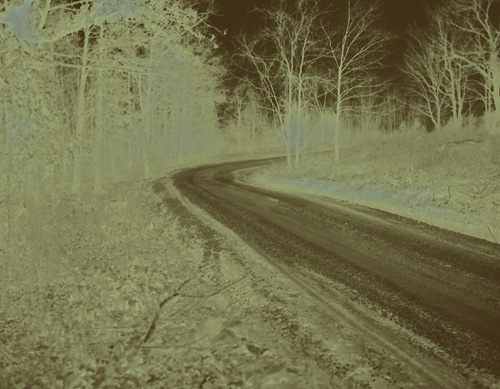
In 1899, his work as a surveyor took Lee Fisher away from his wife and young children in Iowa and into the backwoods of eastern Kentucky. In a series of letters, he shared with wife Adah his impressions of the area’s agriculture, living conditions and people. Fisher found much of interest in the environs of Floyd County’s Calf Creek, including the prosperous farm of a local fruit grower and beekeeper. Even more noteworthy, however, were the tales the farmer told him of a nearby gulch—“Bugger Holler”—that was said to be haunted.
Among the spooky stories:
A man walking through the hollow one night encountered a dog that “turned its head towards him and its eyes began to shine like two balls of fire then it opened its mouth and a light blue flame came out of its mouth,” allowing the man to see “at least 20 feet [!] down the throat of the dog.”
A man riding through the hollow one evening “saw what appeared to be a horse but instead of having a head like a horse it had a head and body like a centaur.” The man’s own horse “turned around with a snort and trembling in every muscle it ran several hundred yards before he could be stopped.”
A man coming up the road toward the hollow one night “saw a woman standing by the side of the road wrapped in a cloak but without any head on and no matter which way he went she always followed him and it was sometime before he could shake her.” The experience left him so rattled that he did not “know enough to speak when spoken to.”
An elderly woman passing through the hollow late one night “saw two women standing by the road neither one of them having any head.”
All of these nocturnal travelers seemed to have ignored the conventional wisdom since, Fisher wrote, “it is very rare anybody will pass there at night if they can avoid it.” He and some of his curious coworkers, however, decided to try some ghosthunting themselves. They ventured into the hollow after nightfall, “when it was so dark you could not see the road,” but had no luck seeing or hearing anything supernatural.
The farmer who told Fisher these stories was himself skeptical about their veracity, but hastened to claim that his own house was haunted. Neighbors had warned him that constructing such a large house for his small family would invite a paranormal presence, but everything remained quiet—at least for a few years. Then, one night “he heard the most awful noise as if someone had rubbed a stick hard upon a dry goods box and then something like a cannon ball had fallen upon the upstairs floor.” The pattern repeated itself, and no amount of investigation could reveal its source. Frustrated, the farmer called for a curse upon whomever or whatever was causing the ruckus, a response that seemed to shame the poltergeist into silence. But every once in a while it would reassert itself—for example, by causing a bedroom door to spring open and thump against the bed of the unfortunate occupant.
Lee Fisher’s letters and ghost stories are part of the Manuscripts & Folklife Archives of WKU’s Department of Library Special Collections. Click here for a finding aid. For other collections about ghosts, spirits and hauntings, search TopSCHOLAR and KenCat.
